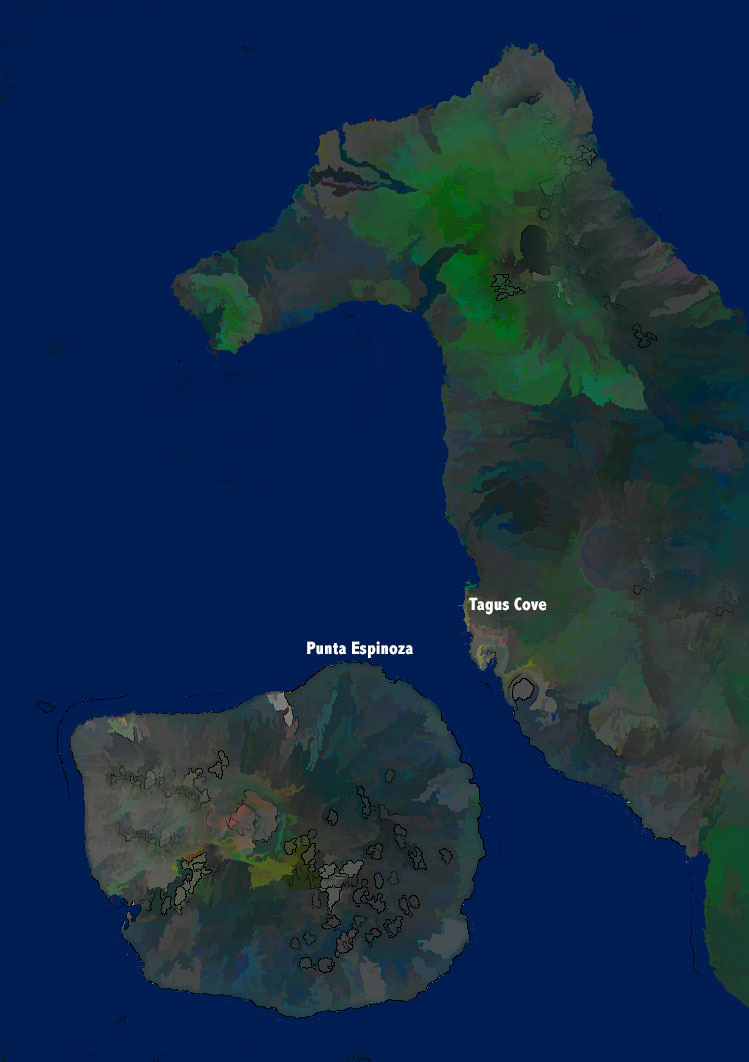
Since we anchored at nearby Punta Espinoza overnight, an early wake-up and breakfast got us onshore at the earliest possible time, plus there were no other boats anchored with us, so we had the site to ourselves for quite some time this morning. Indeed, this was one our longest walks to date, time wise. Punta Espinoza is the only visitation site on Fernandina, and the island has no introduced mammals, which is one reason why you see such a huge colony of iguanas here: basically it’s only food sources that constrain them. This particular area was formed in the 1800’s by volcanic activity that caused an uprising, and Fernandina is the island with the most recent volcanic activity (a huge eruption in 1968, the most recent in 1995).

The attraction here is instantly visible: marine iguanas everywhere. It’s almost impossible to not step on a lizard tail there are so many of them. It may be difficult to tell from the wide angle shot, above, but those black objects are not lava (though they’re on the lava): they’re literally thousands of marine iguanas. And these iguanas all had first light on them. At this time in the morning, the lizards are just trying to warm their bodies to get ready for their swim for food. So while we have thousands of iguanas to try to figure out how to compose, at least they’re not moving around (much).
It took us almost three hours to do what couldn’t have been more than a mile worth of walking (the full trail is about 2000m, but we didn’t do it all). With no other groups on land, we had plenty of time to work on framing pile after pile of iguanas. We also had some more interesting bits, such as one Sally Lightfoot crab snacking on another Sally Lightfoot crab. If you look carefully to see everything that’s around you, sometimes you spot little anomalies like that. Plus there’s always the occasional male dominance fight with the iguanas (hint: December would probably be peak season for fighting males).
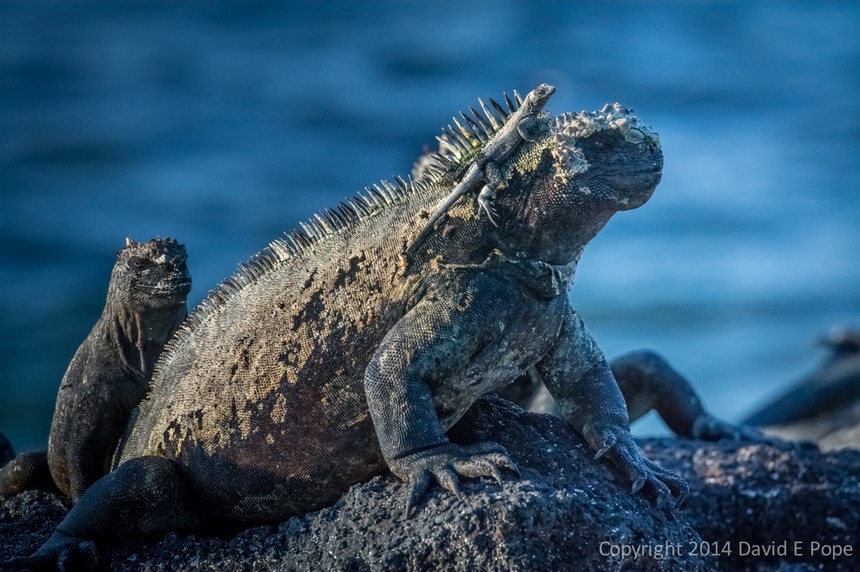
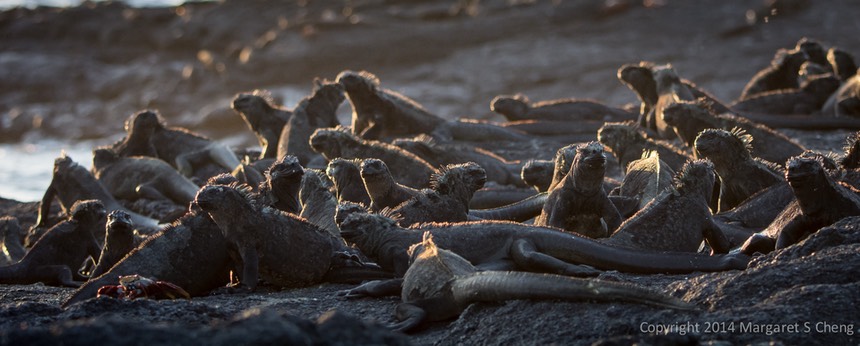
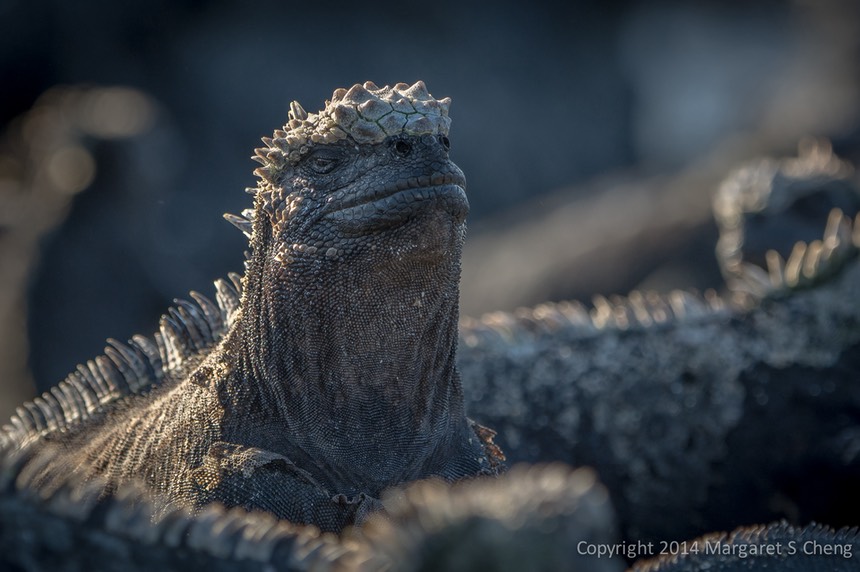

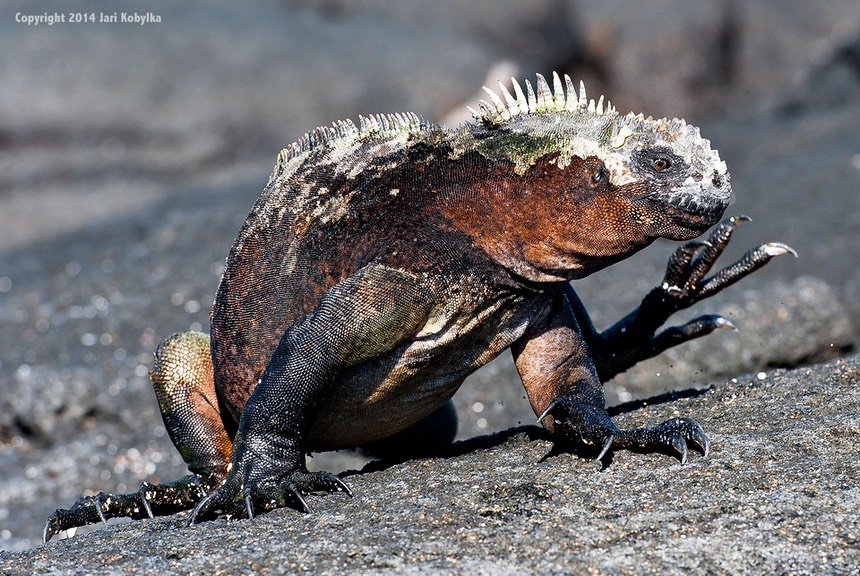
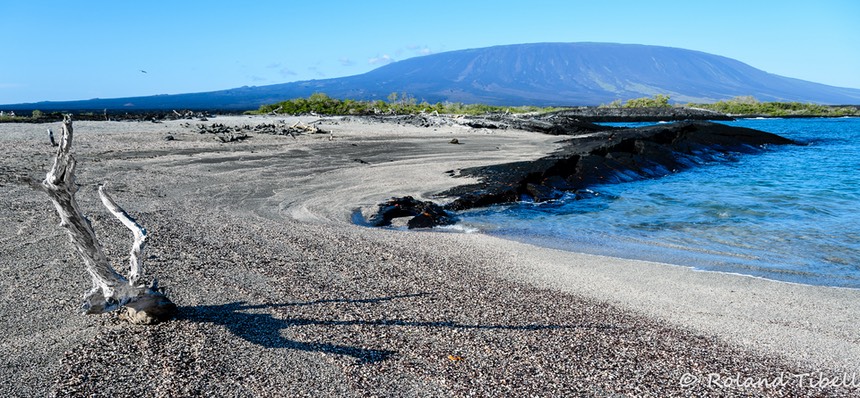


You really have to keep your eyes open, despite all those distracting iguanas. Doug managed to find someone having breakfast:
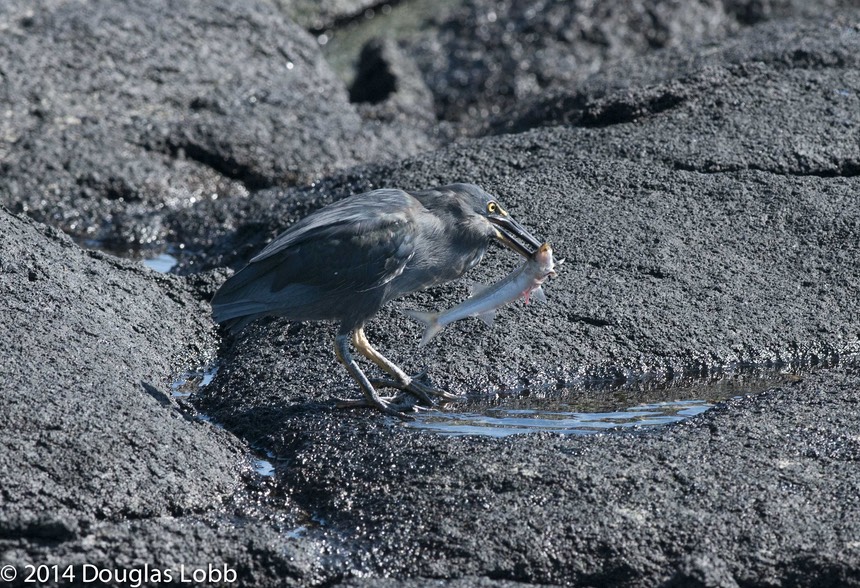
This brings up the tension point about places that are so target rich like this one. You have a choice of the bird in the viewfinder, or two in the next bush. It’s a tricky dynamic. Personally, I think you should keep with the bird in the viewfinder (or whatever you’re shooting). The only reasons to move on are: (1) you’ve optimized that shot (and be honest with yourself on that) and aren’t likely to get better; or (2) you haven’t optimized that shot and need to work it some more to get the best possible shot. Sometimes with animals or light you’re playing a waiting game, too. You’re waiting for the bird to take off, or the lizard to shoot sea salt out its nostrils, etc. So there’s always a judgment call involved. And yes, in places like the Galapagos if you move ten feet you might be treated to something better.
But what I’ve found is that far too many people—including myself sometimes—are too quick to dismiss what they’re doing for fear of missing something else. I’m pretty sure that even just five days in, everyone’s looking at everyone else’s images and wondering why they didn’t see something. Well, they were working on something else, that’s why! There’s absolutely nothing wrong with that. If you let yourself get into image envy you’re selling yourself short. Find a shot and take the best possible version of it you can; yours may be the shot that others wished they had gotten ;~).
This tension is one of the reasons why many of us pros return to the same place over and over. Sure, we didn’t get the bat being eaten by the snake shot this trip, but maybe next time.
Note that on most one-week Galapagos tours the tension is almost always broken by the guides forcing you to move on as a 16-person group. Being the one serious photographer in a large group that includes more casual visitors is almost guaranteed to be frustrating, as you’ll be dragged forward as the attention spans of the rest of the group wane. So far in this trip not a single other group has been on any visitation site as long as we have, and I expect that to continue, as we’re working very slowly through the landscape.
As we finally began to get back on the pangas, many of the lizards were now entering the water. Which is perfect, because as soon as we were back at the boat we changed to snorkeling gear and went right out to find where they are eating underwater. And that snorkel turned into a real winning swim:
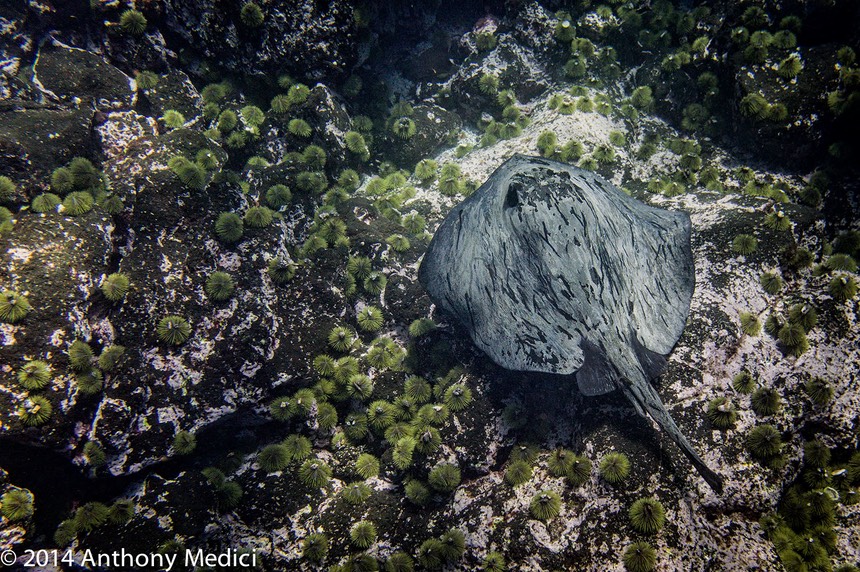

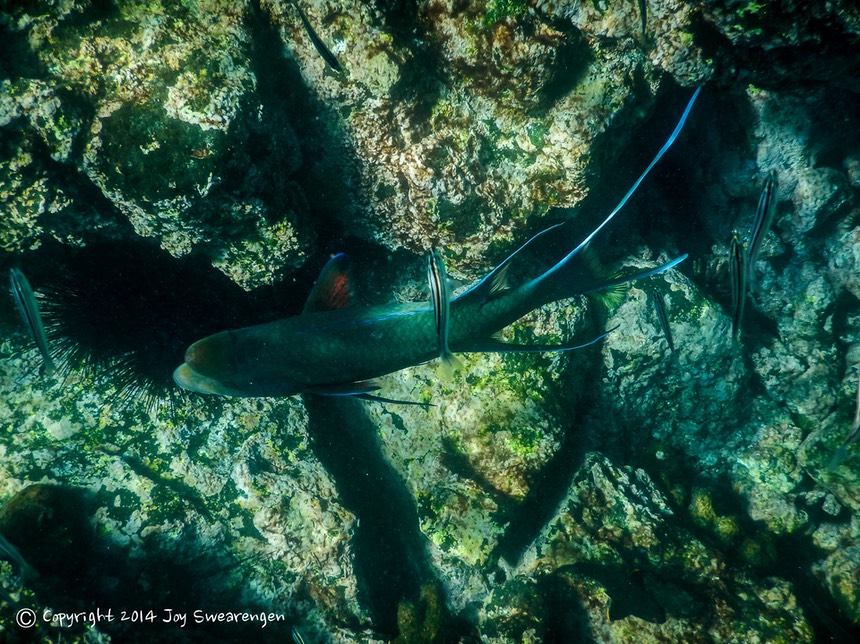
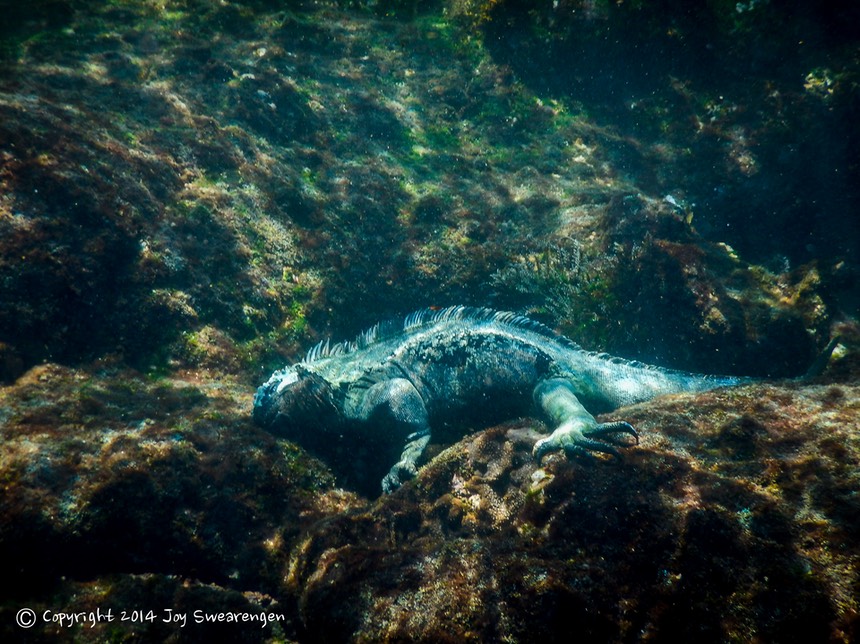

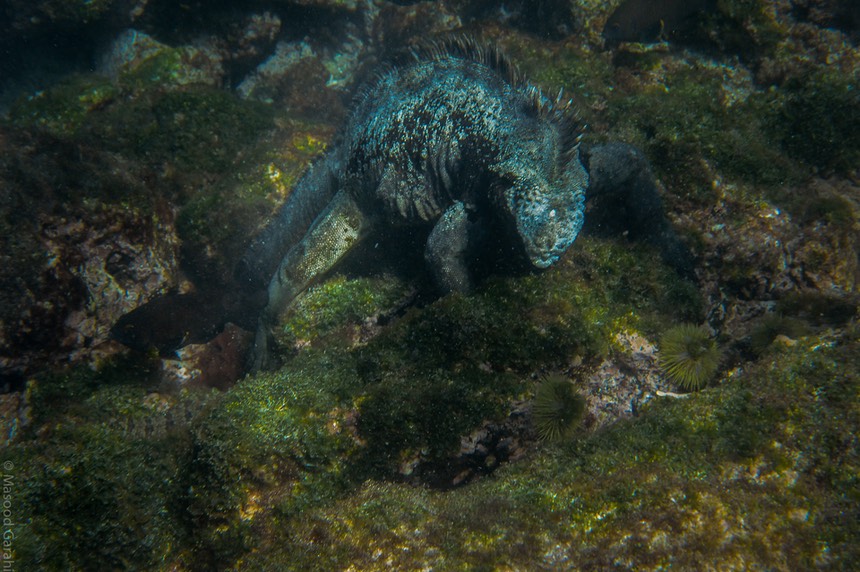
Yes, those are lizards swimming and eating under water (and one human).
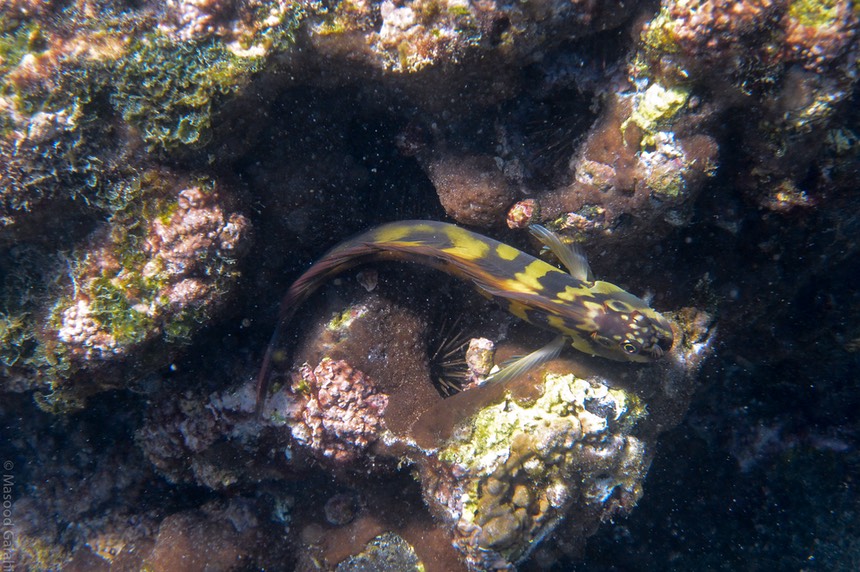
An aside: many of us were using Nikon 1’s underwater (including at least one J1 in an UW housing, but mostly AW1s). As you probably noticed, this site probably now has more underwater shots with those cameras than Nikon’s, and very authentic ones. The AW1 turned out to be a near perfect snorkeling camera. The other popular underwater camera was the GoPro, which also worked well:
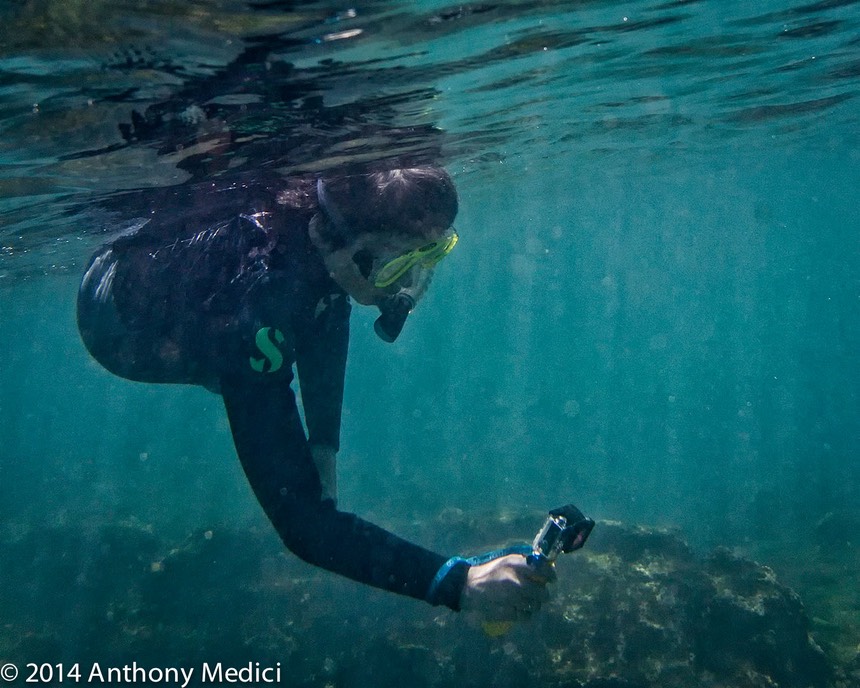

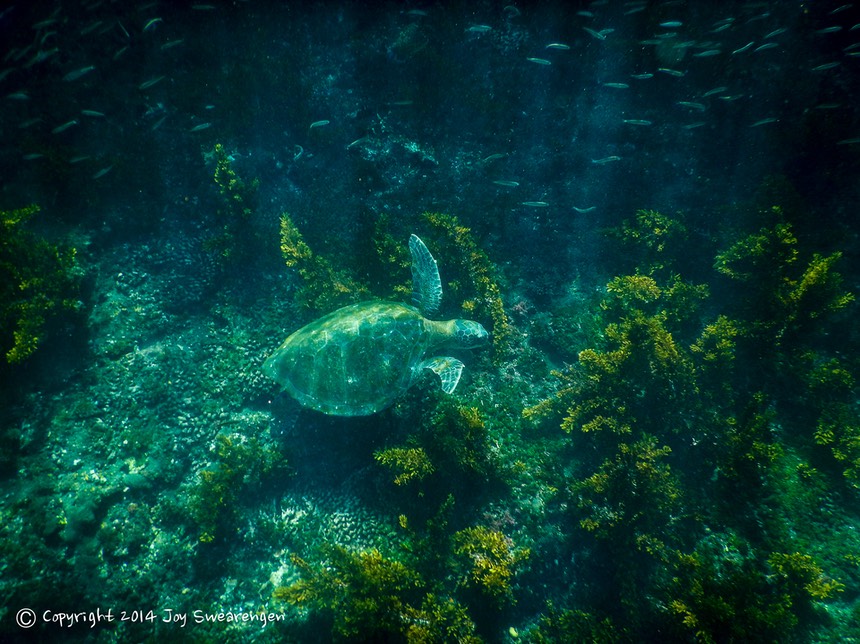

During lunch we crossed back over to Isabela to Tagus Cove on Isabela, where we started with another snorkel (the photos above starting with Tony’s shot of the GoPro user). Then late in the afternoon we did a landscape walk up to a collapsed cinder cone. Tagus Cove itself is a collapsed cone, with the center actually in Darwin Lake (bottom water, below). Darwin Lake is salt water and sustains no wildlife.
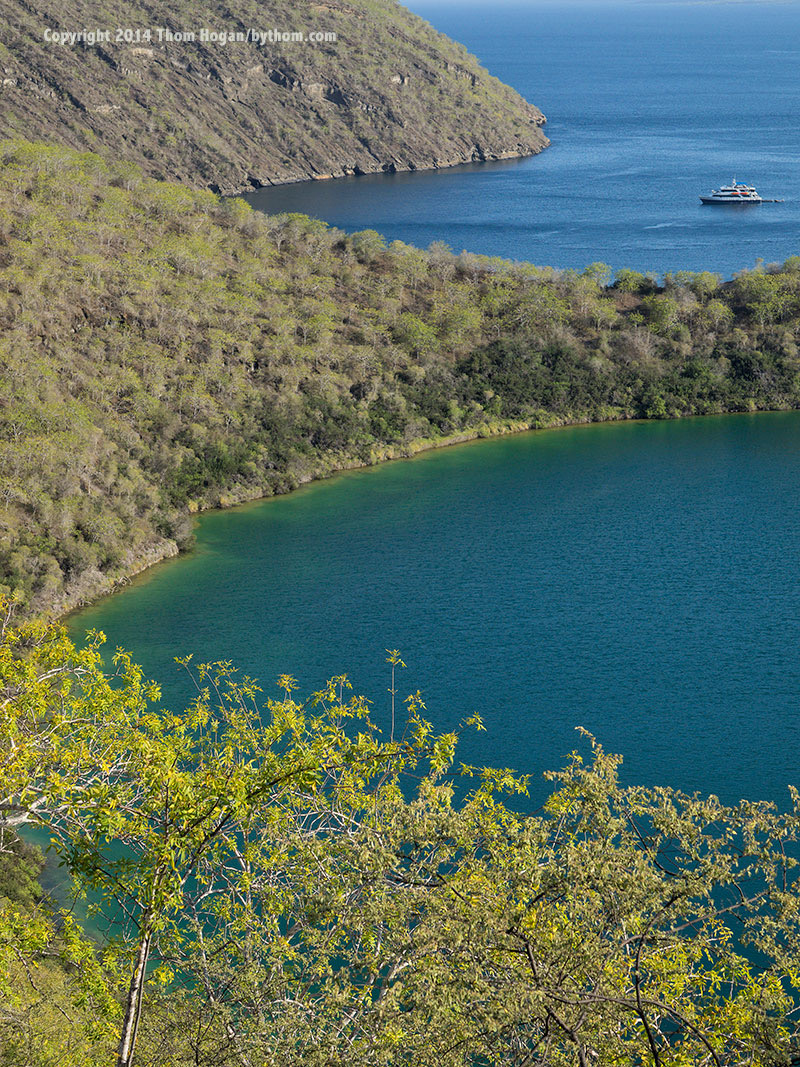
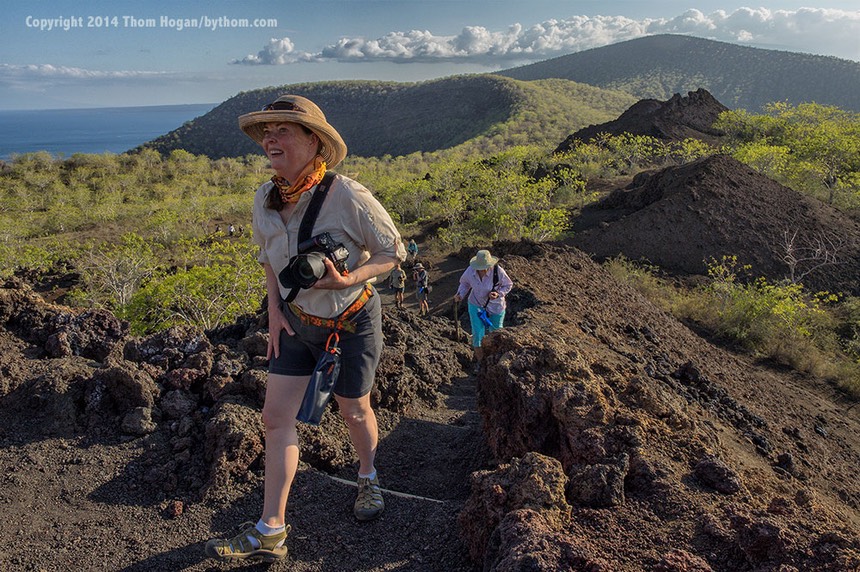
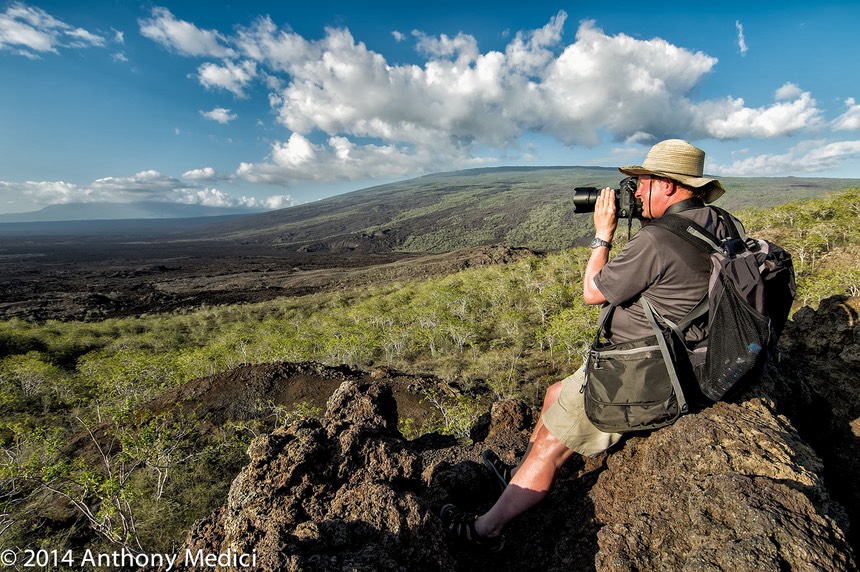
As always, if you look carefully, you’ll find animals while you’re hiking:
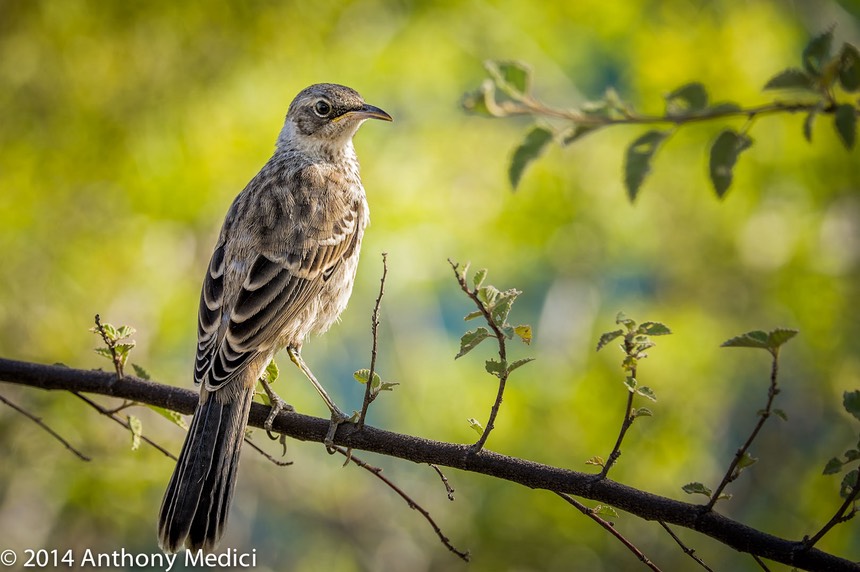
Landings: Punta Espinoza is a dry landing that has a small wade through a mangrove pond; Tagus Cove is also a dry landing, though the rocks can be slippery with sea lions in the way
Snorkeling: Tagus Cove snorkeling is done via panga generally along the rocky edges of the cove, very sheltered
Major New Sightings: masses of marine iguanas, iguanas eating underwater, rays, flightless cormorant
